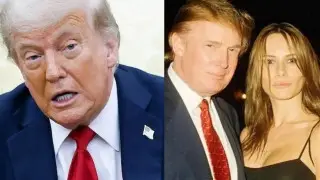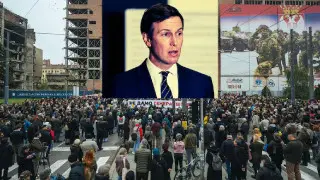
US Vice President JD Vance (Social media)
World News: U.S. President Donald Trump’s bold declaration that Iran’s nuclear program has been “completely destroyed” may sound strong and decisive, but the ground reality appears far more complex—and uncertain. In fact, top American officials have now acknowledged that they do not know what happened to Iran’s stockpile of weapons-grade uranium. Rather than ending, the crisis seems to be entering a more opaque and dangerous phase.
In a surprising statement on Sunday, U.S. Vice President JD Vance admitted during an appearance on ABC’s “This Week” that Washington currently has no idea where Iran’s enriched uranium—sufficient to produce nine or ten nuclear bombs—has gone.
“We want to make sure, in the coming weeks, what has been done with that fuel,” Vance said. “We will try to engage with Iran on this.”
Although Vance also claimed that Iran’s ability to weaponize the uranium has been severely damaged due to the destruction of essential equipment, nuclear experts argue that the claim doesn’t go far enough. The existence of such a large amount of uranium, they warn, still represents a critical threat.
Iran, meanwhile, has shown no willingness to engage with the United States. The Iranian government has neither confirmed nor denied the fate of its uranium reserves. This silence has raised concerns among global analysts, many of whom believe Tehran may now be holding onto its nuclear material as a diplomatic bargaining chip.
Far from indicating de-escalation, this silence suggests that Iran could be preparing to leverage its nuclear capabilities in future negotiations—or as a deterrent.
While President Trump maintains that U.S. strikes have eliminated Iran’s nuclear facilities, senior American defense officials are pushing back against this narrative. U.S. Defense Secretary Pete Hegseth and the new Chairman of the Joint Chiefs of Staff, Dan Kane, publicly distanced themselves from Trump’s version of events during a weekend press briefing.
According to them, although the strikes did cause significant physical damage to key sites, Iranian forces had already begun relocating critical uranium stockpiles and sensitive equipment before the attacks began.
Israeli intelligence sources have further complicated the picture. Analysts reviewing satellite images of the Fordo uranium enrichment plant found signs that approximately 400 kilograms of uranium enriched to 60% purity had been moved in the days leading up to the strikes. Sensitive machinery was also reportedly removed.
This information was later confirmed by IAEA Director General Rafael Grossi, who revealed that U.N. inspectors had last verified the uranium stockpile a week before Israel initiated its bombing campaign.
If Iran still possesses that enriched uranium, it poses a severe risk not only to regional stability but to global security. Even if the country lacks the means to build a bomb immediately, the material could serve as powerful leverage in geopolitical negotiations.
As of now, President Trump’s triumphant statements about a “decisive victory” appear premature. Without concrete proof of the uranium’s destruction, his claim remains questionable at best.
The future of Iran’s nuclear ambitions remains hidden behind layers of strategic secrecy. While military operations may have halted immediate threats, they have also created more unanswered questions. The world now waits anxiously to see whether the next revelation brings clarity and peace—or unleashes a deeper crisis.













Copyright © 2025 Top Indian News
